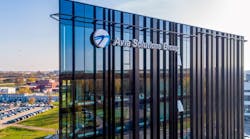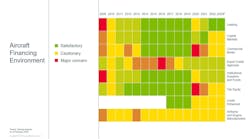Singapore, February 12, 2013 – Embraer Commercial Aviation forecasts that airlines in Asia Pacific, including China, will take delivery of 1,500 new jets in the 70 to 130-seat segment over the next 20 years (valued at US$70 billion at list prices), representing nearly 20% of the worldwide demand for the segment in the period.
Of the region’s new deliveries, 65% are expected to support market growth while 35% will replace ageing aircraft being retired. The Asia Pacific market will become more affluent, competitive and liberal, further stimulating airlines to seek system efficiencies, brand differentiation and improved service levels. In this context, the 70 to 130-seat jet segment will play a key role to support the intra-regional development in Asia Pacific.
“Passenger traffic in the Asia Pacific region is mostly composed by secondary markets with low and medium demand densities of up to 300 passengers daily each way. Some 60% of those markets are not served nonstop, and around half of all markets served do not allow for same day return travel,” said Paulo Cesar Silva, President & CEO, Embraer Commercial Aviation. “Embraer E-Jets provide the capability to develop a better traffic feed system and greater network connectivity, as well as improving the quality of services on existing markets where there is not enough demand to support larger single aisle aircraft operations.”
The region’s economic growth has altered its socio-demographic context, with an increased urban middle class with more discretionary spending and therefore higher propensity to air travel. A positive economic outlook and intra-regional liberalization will drive air transport demand in Asia Pacific to increase 6% annually by 2032, led mainly by China and India. The region will become the world’s largest market accounting for 34% of total revenue passenger kilometers.
As the Low Cost Carrier (LCC) model matures in the region, airlines now have further incentives to search for new opportunities to sustain growth by complementing their narrow-body operations with smaller capacity jets in point-to-point mid density markets, as well as in hub and spoke operations. Proven in service, the E-Jets can play an integral part in the LCC and Mainline Carrier networks by providing the benefit of significantly lower trip costs and competitive seat-mile costs.
In addition, 40% of intra-regional turboprop capacity is offered on routes longer than 450 kilometers which are better suited to E-Jets operations due to its higher network productivity, better operating economics and superior passenger appeal.
The E-Jets family has logged more than 1,400 orders and over 1,000 deliveries to date and are in service with some 65 customers from 45 countries. On the 70 to 130-seat segment Embraer has a global market share of 51% of orders and 62% of deliveries since 2004. In Asia Pacific, Embraer has more than 80% market share in its segment with nearly 150 E-Jets delivered to 10 operators from six countries in the region.
About Embraer Commercial Aviation
Embraer continues to improve the E-Jets family to help airlines to become more efficient. The Company is currently implementing a series of enhancements to the E175, including new wingtips, systems optimization, and aerodynamic refinements that will lower fuel burn by up to 5%. Longer maintenance intervals and component improvements will increase aircraft productivity and lower maintenance costs.
With the E-Jet E2s, Embraer Commercial Aviation demonstrates the company’s commitment to continuous improvement into its line of commercial jets. The three new airplanes (E175-E2, E190-E2, and E195-E2) have geared turbofan engines from Pratt & Whitney, new aerodynamically advanced wings, full fly-by-wire flight controls, and advancements in other systems that will deliver double-digit improvements in fuel burn, maintenance costs, emissions, and external noise compared to current-generation E-Jets. The E190-E2 is expected to enter service in the first half of 2018. The E195-E2 is slated to enter service in 2019 and the E175-E2 in 2020.

